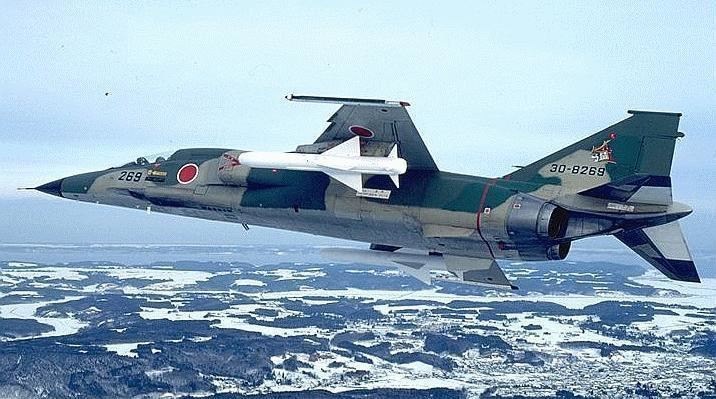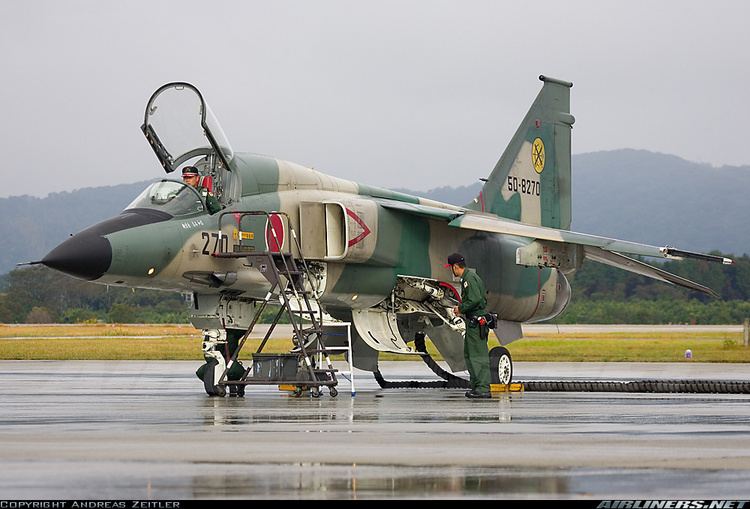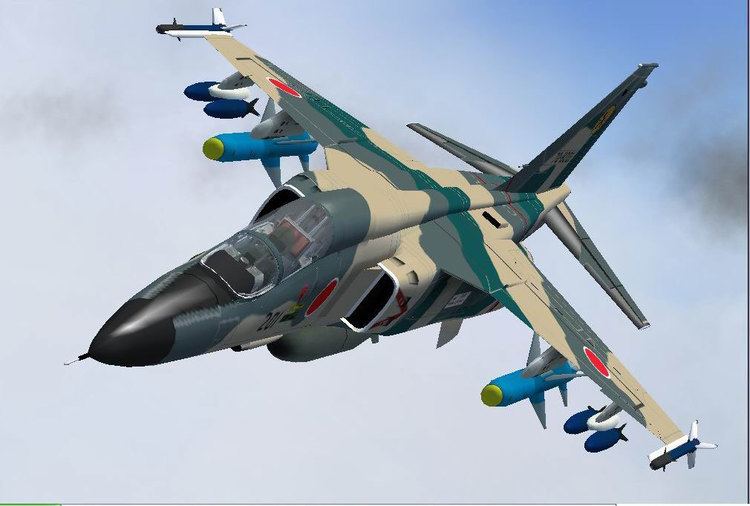Top speed 1,700 km/h Retired 9 March 2006 Length 18 m | Introduced April 1978 Wingspan 7.88 m First flight June 3, 1975 | |
 | ||
Engine type Rolls-Royce Turbomeca Adour | ||
1 48 hasegawa mitsubishi f 1 8sq special painting
The Mitsubishi F-1 is Japan's first post-World War II domestically developed and built supersonic military jet, to enter production in Japan since the end of World War II, thus it was nicknamed "Supersonic Rei-Sen". Mitsubishi Heavy Industries and Fuji Heavy Industries jointly developed the F-1. At first glance, it resembles the French/Anglo SEPECAT Jaguar, but was a completely independent Japanese effort (although it uses the same engines). Its primary role is anti-ship attack, secondary role is ground attack, and it has limited air-to-air capabilities (short-range AIM-9 Sidewinder for self-defense).
Contents
- 1 48 hasegawa mitsubishi f 1 8sq special painting
- Hasegawa 1 48th mitsubishi f 1 review
- Design and development
- Variants
- Operators
- Survivors Aircraft on display
- Specifications F 1
- References

Hasegawa 1 48th mitsubishi f 1 review
Design and development

In the mid 1960s, the Japan Air Self-Defense Force (JASDF) commenced studies into an advanced jet trainer which could also be modified to serve in the ground attack and anti-shipping roles. After considering license production of the T-38 Talon and SEPECAT Jaguar, Japan decided to develop its own trainer, the supersonic Mitsubishi T-2, this first flying on 20 July 1971. Cost over-runs in the T-2 program led to the proposed single seat attack version almost being abandoned, but the cancellation of the Kawasaki P-XL, the planned replacement for Japan's Kawasaki P-2J maritime patrol aircraft freed-up funds, while making it important to keep Japan's aviation industry employed, and contracts were awarded for the development of the attack version as the FS-T2kai in 1973.

The new aircraft was a minimum change derivative of the T-2, with the rear cockpit being converted to an avionics bay by removing the rear seat, and replacing the canopy with a simple unglazed access hatch. Two additional hardpoints were fitted under the wing to allow carriage of a heavier weapon load, and the avionics were improved, with a new J/AWG-12 radar set, similar to that fitted in British Royal Air Force F-4M Phantom fighter jets. This set provides ranging information. Aside from the avionics changes, deletion of the rear seat, and new one-piece canopy, the only other major change from the T-2 was the strengthening of the airframe to enable it to carry a larger weapons load than the T-2. The F-1 is fitted with an internally mounted 20 mm JM61A1 Vulcan cannon with 750 rounds of ammunition. The aircraft also has seven external hardpoints for the carriage of a wide variety of stores. The fuselage hardpoint and inboard pair of underwing hardpoints are "wet", which means they can be used to carry external fuel tanks to increase the aircraft's range. The primary weapon of the F-1 is the ASM-1 and the newer ASM-2 long-range anti-ship missile. This weapon is roughly in the class of the American AGM-84 Harpoon or French AM.39 Exocet. Other weapons carried include the all-aspect short-range heat-seeking AIM-9 Sidewinder air-to-air missile for air-to-air combat. This weapon is carried on the wingtip rails usually, but it can also be carried on the outboard underwing hardpoints for the F-1's secondary air defense role. Other air-to-ground weapons carried include rocket pods (JLAU-3/A) of 70 mm (2.75 in) size as well as bombs of 227 kg (500 lb) and 340 kg (750 lb) in size (Mk82 and M117 respectively). In addition, the Mk-82 and M117 bombs can be fitted with infrared guidance kits, turning them into precision-guided weapons that home in on heat radiation emitted from seaborne targets such as ships or other ground-based targets. When fitted with this kit, the bomb becomes known as GCS-1.

The F-1 was replaced by the F-2 (Japan/U.S. developed, based on F-16C/D), as well as upgraded F-4EJ "Kai" Phantom IIs. The last six active F-1s, based at Tsuiki in Fukuoka Prefecture, were retired on 9 March 2006, having reached the 4,000 hour limit of their airframes.
Variants
Operators
Survivors / Aircraft on display

Specifications (F-1)
Data from Mitsubishi's Sabre Successor
General characteristics

Performance
Armament
